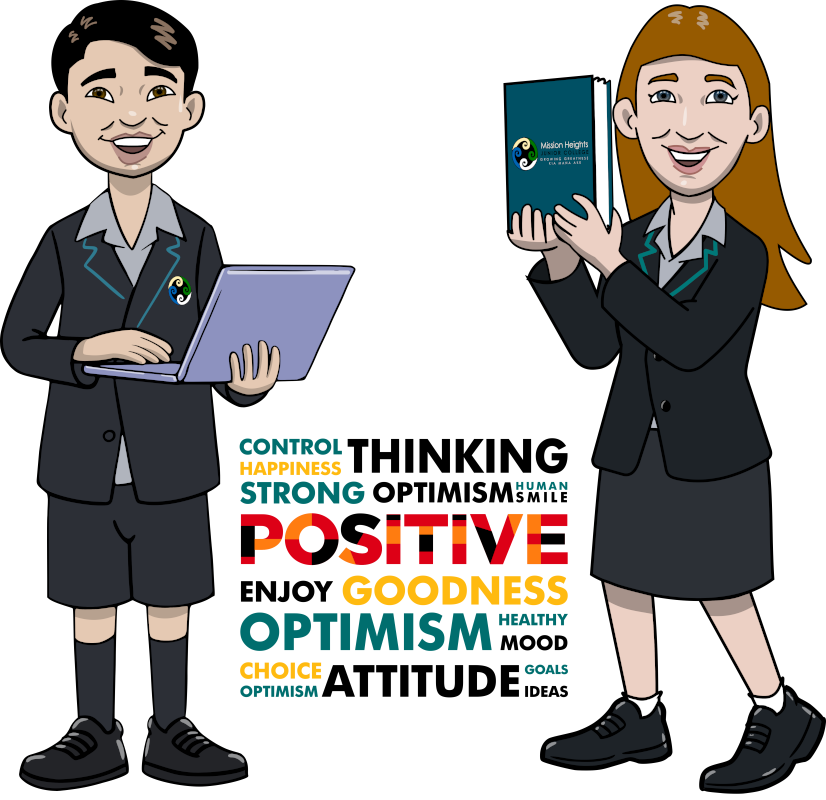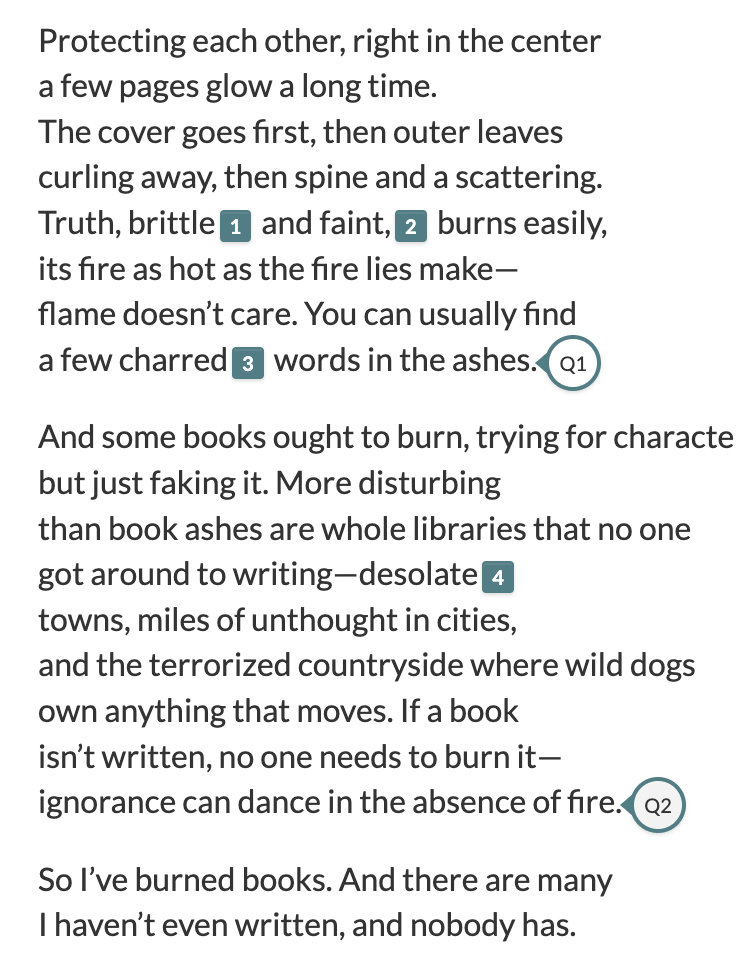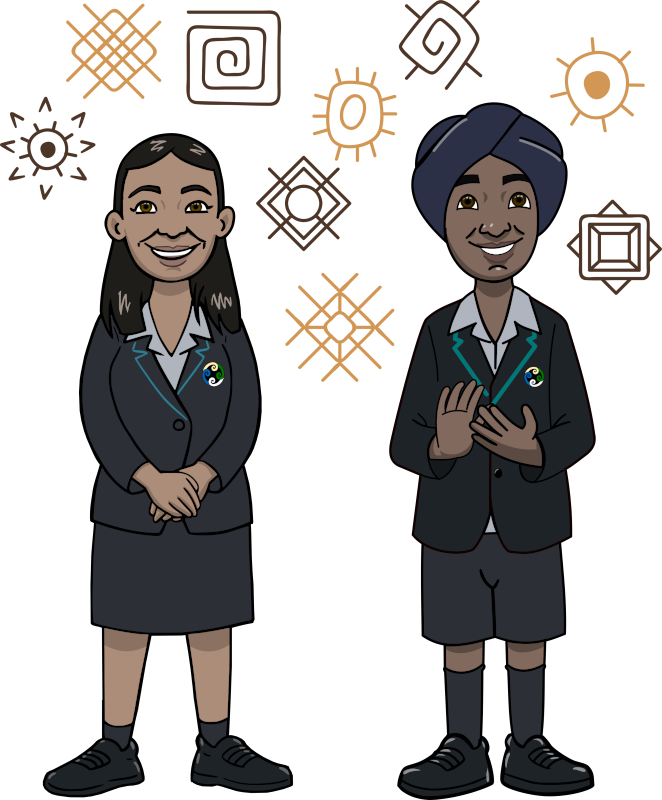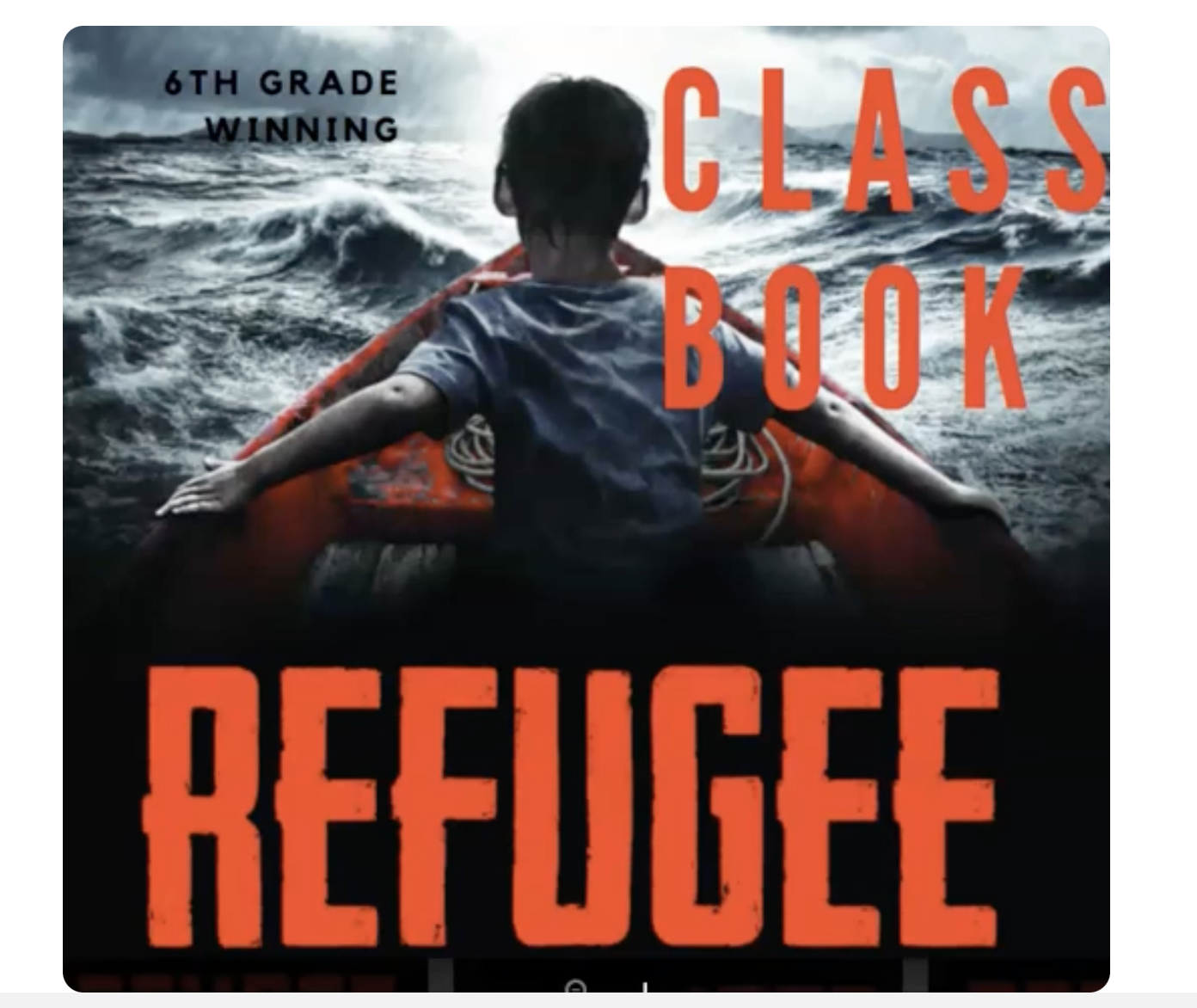9C2 English
Section outline
-
Nau mai, haere mai 9C2
Welcome to your English class for 2024.
Mā te tāngata i te waka
Haere haumaru ki takutai
Hei tūhura ki te ao tūroa
(When the people and the waka
arrive safely to the shores,
they will be ready to explore the world)
Welcome to a new academic year filled with possibilities, growth, and exciting challenges! As you embark on this journey, remember that each day is an opportunity to learn, explore, and discover your incredible potential.
Embrace every challenge with courage, for it is through challenges that we learn, grow, and become stronger individuals. Approach your studies with curiosity and enthusiasm, knowing that each lesson is a step toward your personal and academic success.
You are capable of achieving greatness, and your unique talents contribute to the vibrant tapestry of our learning community. Believe in yourself, stay focused on your goals, and never underestimate the impact of your efforts.
Together, let's create a supportive and inspiring environment where everyone thrives. Take pride in your accomplishments, learn from your experiences, and cherish the journey of education.
Here's to a fantastic year filled with knowledge, friendship, and the joy of learning. You've got this!
Ka kite ano
Mrs M Naidoo-
Opened: Wednesday, 26 June 2024, 12:00 AMDue: Saturday, 3 August 2024, 12:00 AM
-
Opened: Friday, 27 September 2024, 12:00 AMDue: Friday, 4 October 2030, 1:00 AM
-
-
Kia ora whānau!
Haere rā ki te Term Two! (Welcome to Term Two!)
We hope you all had a relaxing and enjoyable holiday break. We're excited to see you all back in class and hear about your adventures.
This term promises to be full of new learning and exciting activities. Get ready to whakamā te reo (practice your te reo) and stretch your brains!
See you all bright and early tomorrow!
Mā te wā (Have a great day!)
Learning Intentions:
- Students will deepen their understanding of Remembrance Day and its significance in Aotearoa New Zealand.
- Students will analyse the poem "The Inquisitive Mind of a Child" to identify themes of loss, sacrifice, and the importance of remembering.
- Students will explore how figurative language contributes to the poem's meaning and emotional impact.
Success Criteria:
- Students can explain the significance of Remembrance Day in their own words.
- Students can identify and explain the use of figurative language (simile, metaphor) in "The Inquisitive Mind of a Child".
- Students can analyse how the poem presents themes of loss, sacrifice, and remembering.
Our Independent Novel Study:
This term, you'll be embarking on an exciting adventure through independent novel studies! To navigate your journey through the world of your chosen book, we'll be using a tracking document to capture key elements of the story and your growing understanding.
Here's a breakdown of what you'll be tracking:
Chapter Summary (2-5 sentences):
Briefly summarise the main events and plot points of each chapter.
Capture who, what, when, where, and why.
Aim for 2-5 clear sentences that condense the chapter's essence.
Significant Event:
Identify and note down the most important or impactful event in each chapter.
This could be a major revelation, a turning point in the plot, or a pivotal moment for a character.
Briefly explain why this event is significant.
Character Development:
Track how characters evolve and change throughout the story.
Did a character learn a lesson? Did their personality shift?
Note down specific instances that showcase this development.
Wonderings and Predictions:
This is your space for curiosity!
As you read, jot down any questions you have about the story or characters.
What remains a mystery? What do you think might happen next?
Your predictions can be based on clues from the text or your own intuition.
Vocabulary:
Encountered new or interesting words while reading?
Write them down here along with their definitions.
This will expand your vocabulary and deepen your understanding of the text.
Remember:
This tracking document is your personal companion through the novel.
Use it to engage with the story, analyse the plot, and track your own understanding.
Feel free to add your own notes, thoughts, or connections to the story!
Happy reading, explorers!
-
Enter text here...
EXPLORE / TŪHURA learning intentions:
- We are EXPLORING/FOCUSING poetic devices and poetry by interpreting how texts in Aotearoa New Zealand provide a lens on our unique cultural heritage.
- We are EXPLORING poetry by recognising how texts have biases (e.g. political, material, and social) which inform their purposes
Awhinatanga: Resilient Mindset

Wänanga: Active Learner
Enter text here...
Whakaatu o Whakaaro- Creative expression and developing our mindset
Poem: Burning a Book by William Stafford
Learning Intentions:
- Students will explore the complex symbolism of burning books in poetry.
- Students will analyse the poet's message about truth, lies, and the importance of knowledge.
- Students will identify and explain figurative language used in the poem (simile, metaphor)
- Whakamahia nga kupu whakaahua (Use figurative language)
Success Criteria:
- Students can explain the symbolic meaning of burning books in the poem.
- Students can identify and analyse different uses of figurative language (simile, metaphor) within the poem.
- Students can explain the poet's message about truth, lies, and the importance of knowledge.

-
EXPLORE / TŪHURA learning intentions:
- We are EXPLORING/FOCUSING poetic devices and poetry by interpreting how texts in Aotearoa New Zealand provide a lens on our unique cultural heritage.
- We are EXPLORING poetry by recognising how texts have biases (e.g. political, material, and social) which inform their purposes
Awhinatanga: Resilient Mindset

Wänanga: Active Learner
Kia ora whānau!
Today we delve into the world of Maya Angelou's powerful poem, "Caged Bird."
Imagine a bird with clipped wings, longing for the endless sky. This poem uses beautiful imagery to explore themes of freedom and limitation.
As we analyse "Caged Bird," we'll be looking closely at the language, uncovering the symbolism, and considering the speaker's voice.
Get ready to whakamā te reo o te waiata (practice the language of the poem) and unlock its deeper meaning!
Learning Intentions:
- Students will analyse the symbolism and themes of freedom and oppression in Maya Angelou's poem "Caged Bird."
- Students will develop close reading skills to identify figurative language and explore the poet's voice.
- Students will consider the poem's broader message about resilience and the human spirit's yearning for freedom.
- Students will create their own piece of writing expressing their thoughts on overcoming limitations.
- Introduce the concept of whakawehi (challenge) and its connection to the caged bird's struggle.
- Briefly discuss the importance of rangatiratanga (chieftainship, self-determination) in Māori culture, linking it to the theme of freedom.
Success Criteria:
- Students can explain the symbolic meaning of the caged bird in the poem.
- Students can identify and analyze examples of figurative language (simile, metaphor, personification) used in the poem.
- Students can explain the speaker's voice and how it contributes to the poem's message.
Caged Bird
BY MAYA ANGELOU
A free bird leaps
on the back of the wind
and floats downstream
till the current ends
and dips his wing
in the orange sun rays
and dares to claim the sky.
But a bird that stalks
down his narrow cage
can seldom see through
his bars of rage
his wings are clipped and
his feet are tied
so he opens his throat to sing.
The caged bird sings
with a fearful trill
of things unknown
but longed for still
and his tune is heard
on the distant hill
for the caged bird
sings of freedom.
The free bird thinks of another breeze
and the trade winds soft through the sighing trees
and the fat worms waiting on a dawn bright lawn
and he names the sky his own.
But a caged bird stands on the grave of dreams
his shadow shouts on a nightmare scream
his wings are clipped and his feet are tied
so he opens his throat to sing.
The caged bird sings
with a fearful trill
of things unknown
but longed for still
and his tune is heard
on the distant hill
for the caged bird
sings of freedom.
-
EXPLORE / TŪHURA learning intentions:
- We are EXPLORING/FOCUSING poetic devices and poetry by interpreting how texts in Aotearoa New Zealand provide a lens on our unique cultural heritage.
- We are EXPLORING poetry by recognising how texts have biases (e.g. political, material, and social) which inform their purposes
Awhinatanga: Resilient Mindset

Wänanga: Active Learner
Kia ora whānau!
Today we delve into the world of Maya Angelou's powerful poem, "Caged Bird."
Imagine a bird with clipped wings, longing for the endless sky. This poem uses beautiful imagery to explore themes of freedom and limitation.
As we analyze "Caged Bird," we'll be looking closely at the language, uncovering the symbolism, and considering the speaker's voice.
Get ready to whakamā te reo o te waiata (practice the language of the poem) and unlock its deeper meaning!
Learning Intentions:
- Students will analyse the symbolism and themes of freedom and oppression in Maya Angelou's poem "Caged Bird."
- Students will develop close reading skills to identify figurative language and explore the poet's voice.
- Students will consider the poem's broader message about resilience and the human spirit's yearning for freedom.
- Students will create their own piece of writing expressing their thoughts on overcoming limitations.
- Introduce the concept of whakawehi (challenge) and its connection to the caged bird's struggle.
- Briefly discuss the importance of rangatiratanga (chieftainship, self-determination) in Māori culture, linking it to the theme of freedom.
Success Criteria:
- Students can explain the symbolic meaning of the caged bird in the poem.
- Students can identify and analyze examples of figurative language (simile, metaphor, personification) used in the poem.
- Students can explain the speaker's voice and how it contributes to the poem's message.
Caged Bird
BY MAYA ANGELOU
A free bird leaps
on the back of the wind
and floats downstream
till the current ends
and dips his wing
in the orange sun rays
and dares to claim the sky.
But a bird that stalks
down his narrow cage
can seldom see through
his bars of rage
his wings are clipped and
his feet are tied
so he opens his throat to sing.
The caged bird sings
with a fearful trill
of things unknown
but longed for still
and his tune is heard
on the distant hill
for the caged bird
sings of freedom.
The free bird thinks of another breeze
and the trade winds soft through the sighing trees
and the fat worms waiting on a dawn bright lawn
and he names the sky his own.
But a caged bird stands on the grave of dreams
his shadow shouts on a nightmare scream
his wings are clipped and his feet are tied
so he opens his throat to sing.
The caged bird sings
with a fearful trill
of things unknown
but longed for still
and his tune is heard
on the distant hill
for the caged bird
sings of freedom.
-
Here's how we'll complete the analysis:
Head over to Google Classroom (GC).
Open Slide 1 titled "Caged Bird by Maya Angelou - Analysis Help."
On the slide, you'll find two resources:
A video analysis of the poem to help you with your annotations (notes) in your English book.
Follow-up questions about the poem to deepen your understanding.
Here's what to do:
Watch the video analysis carefully.
Open your English book and find the page with "Caged Bird."
Use the insights from the video to annotate the poem. Highlight important words or phrases, jot down your interpretations, and note any literary devices used.
Make sure to take thorough notes, as they will be essential for your upcoming assessment on this poem.
Remember:
Maya Angelou is a powerful voice, and "Caged Bird" explores themes of freedom, hope, and resilience.
Use the video and your annotations to unlock the deeper meaning of the poem.
-
Enter text here...
FOCUS / ARONGA learning intentions:
- We are FOCUSING on poetic devices and poetry by analysing multiple and sometimes competing interpretations of a text, including my own, using analytical lenses to make informed judgments about the text
- We are FOCUSING on figurative language and structural features by recognising how texts include or exclude people, places, or ideas in different cultural, historical, political and social contexts.
Awhinatanga: Culturally Connected

Enter text here...
Kia kaha te reo, kia kaha te whakaaro (Let the language be strong, let the thinking be strong)!
Calling all rangatahi whakamihipiripiri (curious learners)!
Remember those powerful poems we explored in class – "Caged Bird" by Maya Angelou, "Poem for Remembrance", "Burning Books", and "Mother Earth"
It's time to revisit these taonga (treasures) and delve deeper into their messages. We'll be reflecting on the themes they explore, like freedom (whakaputunga), memory (whakamaharatia), the power of knowledge (te mātauranga), and caring for our planet (te Papatūānuku).
Head over to Google Classroom where you'll find some whakautu kī (thought-provoking questions) waiting for you. Grab your english books and answer these questions as we prepare for our assessment in Week 7.
By reflecting on these poems and answering the questions, you'll gain a deeper understanding of the poet's voice and the important messages they convey.
So, let's whakatau (decide) to whakaaro nui (think deeply) and unlock the power of these taonga!
-
Kia whakaatu te whakaaro, kia whakaoti te whai mātauranga (Let your thoughts be shown, let the pursuit of knowledge be complete)!
Rangatahi whakamihipiripiri (curious learners), today is the day to showcase your kōrero (knowledge) on the powerful poems we explored in class. Remember those evocative works: "Caged Bird" by Maya Angelou, "Poem for Remembrance" , "Burning Books", and "Mother Earth"
We're on a mission to unlock the deeper meanings within these taonga (treasures). Turn to your trusty english books, your puna mātauranga (source of knowledge), and revisit the poems and the notes you've gathered.
Remember, whanaungatanga (collaboration) is key, but for this assessment, we want to see your own unique whakaaro (thinking). Use your english books as a guide, not a crutch.
The assessment question will challenge you to delve into themes like hope (tumeia), remembrance (whakamaharatia), the significance of knowledge (te whakapai ake o te mātauranga), and caring for our planet (te Papatūānuku).
Kia kaha (be strong) and kia whakaute (be confident) as you express your understanding! Show off your analytical skills and let your passion for these poems shine through.
-
Kia whakaatu te whakaaro, kia whakaoti te whai mātauranga (Let your thoughts be shown, let the pursuit of knowledge be complete)!
Rangatahi whakamihipiripiri (curious learners), today is the day to showcase your kōrero (knowledge) on the powerful poems we explored in class. Remember those evocative works: "Caged Bird" by Maya Angelou, "Poem for Remembrance" , "Burning Books", and "Mother Earth"
We're on a mission to unlock the deeper meanings within these taonga (treasures). Turn to your trusty english books, your puna mātauranga (source of knowledge), and revisit the poems and the notes you've gathered.
Remember, whanaungatanga (collaboration) is key, but for this assessment, we want to see your own unique whakaaro (thinking). Use your english books as a guide, not a crutch.
The assessment question will challenge you to delve into themes like hope (tumeia), remembrance (whakamaharatia), the significance of knowledge (te whakapai ake o te mātauranga), and caring for our planet (te Papatūānuku).
Kia kaha (be strong) and kia whakaute (be confident) as you express your understanding! Show off your analytical skills and let your passion for these poems shine through.
-
Kia ora whanau! Get ready to unleash your inner persuaders this week! We're jumping into the exciting world of persuasive speaking, and the best part? YOU get to choose your own topic!
But wait, there's more! Before you dive headfirst into crafting your masterpiece, we'll be making sure your topic aligns with the school environment. This will help ensure your arguments resonate with your classmates.
Speaking of arguments... We'll also be sharpening our speaking skills through some fun impromptu topics. Think on-the-spot debating and creative storytelling! This will get you comfortable thinking critically and expressing yourselves clearly, both on the fly and when you've had time to prepare.
So, get those creative juices flowing! What topic are you passionate about that you could convince your classmates (and maybe even your teachers) to agree with?
I will be checking your choices and offering guidance throughout the week. Let's make this a persuasive speaking adventure you won't forget!
Learning Intentions:
- Students will be able to plan, write, and deliver a persuasive speech that aims to convince an audience of a particular viewpoint.
- Students will understand the key elements and structure of a persuasive speech, including a strong introduction, clear arguments, supporting evidence, and a compelling conclusion.
- Students will be able to identify and use persuasive techniques such as appeals to logic, emotion, and ethics.
Success Criteria:
- Planning: Students can create a well-organised and detailed speech plan that outlines their key arguments, supporting evidence, and persuasive techniques.
- Content: Students will write a persuasive speech that clearly states their position on the chosen topic and provides strong evidence to support their arguments. The speech will incorporate a variety of persuasive techniques effectively.
- Structure: The speech will follow a clear and logical structure, including a strong introduction that grabs the audience's attention, a well-developed body with distinct arguments and supporting evidence, and a compelling conclusion that summarises the key points and leaves a lasting impression.
-
Kia ora whanau! Mānawatia a hoki te whakatau ki te kura! (Welcome back to school!) I hope everyone had a relaxing and enjoyable break.
This term, we'll be embarking on a journey to explore Kotahitanga (unity) through the lens of significant human events, with the Olympics as our guiding theme.
We'll begin by strengthening our writing skills through the art of formal letter writing.
Here's what we will do first:
- Learning to express ourselves clearly and persuasively in a formal setting.
- Understanding how events like the Olympics can foster a sense of unity and collaboration.
- Connecting these concepts to our own lives and communities.
Get ready to expand your knowledge, hone your writing skills, and delve into the powerful concept of Kotahitanga!
Learning Intentions:
- Students will write formal letters that demonstrate a clear purpose and audience.
- Students will use persuasive language to support their arguments.
- Students will integrate relevant information about the Olympic Games and the concept of unity.
- Students will maintain a formal tone and appropriate register.
Success Criteria:
- Content :
- The letter clearly addresses the chosen prompt and purpose.
- Relevant information about the topic and unity is effectively integrated.
- Persuasive language is used to support arguments or opinions (e.g., strong verbs, appeals to emotion, logical reasoning).
- Structure and Organisation :
- The letter follows a clear formal structure with a proper salutation, introduction, body paragraphs, and conclusion.
- Transitions are used effectively to connect ideas within and between paragraphs.
- Language Features :
- Formal tone and appropriate register are maintained throughout the letter.
- A variety of vocabulary is used, demonstrating understanding of the topic and formal writing style.
- Sentence structure is varied and grammatically correct.
-
EXPLORE / TŪHURA learning intentions:
- We are EXPLORING the different formats and purposes of newspaper articles, formal letters, opinion articles, and interviews.
- We are EXPLORING how language features are used to achieve different purposes in these texts.
Wänanga: The 5 Cs
Wänanga: GREAT Ako

Ako: Digital Literacy

This week we're diving into the world of journalism! We'll be exploring the structure of a newspaper article and discovering what makes a headline truly hīkaka (eye-catching). We'll also be thinking about how to choose the perfect image to accompany our stories.
To bring this to life, we'll be focusing on writing a news article about a major event at the Olympics. Let's get ready to channel our inner reporters and create engaging stories!
Success Criteria:
- Whakamahia ngā āhuatanga o te tuhinga whaimana : I can identify and use appropriate language features for formal writing, such as formal greetings, polite tone, and correct punctuation.
- Whakahaeretia ngā whakaaro : I can structure my writing with a clear introduction, body, and conclusion.
- Whakamahia ngā hononga whakaaro : I can use linking words and phrases to connect ideas and create a logical flow.
- Whakaputahia ngā whakaaro mā te mārama : I can present my ideas clearly and concisely using appropriate language.
- Arotakehia te tuhinga : I can check my writing for spelling, grammar, and punctuation errors.
-
EXPLORE / TŪHURA learning intentions:
- We are EXPLORING the different formats and purposes of newspaper articles, formal letters, opinion articles, and interviews.
- We are EXPLORING how language features are used to achieve different purposes in these texts.
Wänanga: The 5 Cs
Wänanga: GREAT Ako

Ako: Digital Literacy

We are bringing our writing to life this week, we'll be focusing on writing a news article about a major event at the Olympics. Let's get ready to channel our inner reporters and create engaging stories!
Success Criteria:
- Whakamahia ngā āhuatanga o te tuhinga whaimana : I can identify and use appropriate language features for formal writing, such as formal greetings, polite tone, and correct punctuation.
- Whakahaeretia ngā whakaaro : I can structure my writing with a clear introduction, body, and conclusion.
- Whakamahia ngā hononga whakaaro : I can use linking words and phrases to connect ideas and create a logical flow.
- Whakaputahia ngā whakaaro mā te mārama : I can present my ideas clearly and concisely using appropriate language.
- Arotakehia te tuhinga : I can check my writing for spelling, grammar, and punctuation errors.
-
EXPLORE / TŪHURA learning intentions:
- We are EXPLORING the different formats and purposes of newspaper articles, formal letters, opinion articles, and interviews.
- We are EXPLORING how language features are used to achieve different purposes in these texts.
Wänanga: The 5 Cs
Wänanga: GREAT Ako

Ako: Digital Literacy

Kia ora whānau,
This week we're diving into the exciting world of journalism! We'll be putting the finishing touches on our newspaper articles. Remember to use the success criteria below as your guide to creating amazing stories. Let's work together to produce a fantastic newspaper!
Success Criteria:- My article has a clear purpose and achieves its intended goal (e.g., to inform, entertain, persuade).
- My article presents information in a clear, concise, and engaging manner.
- I have included relevant details and examples to support my main points.
- I have structured my article logically with a clear beginning, middle, and end.
- I have used a variety of sentence structures to maintain reader interest.
- I have used accurate and appropriate vocabulary to convey my meaning.
- My writing is free from grammatical errors and spelling mistakes. I have used language that is suitable for my target audience.
- My article has a clear and engaging headline that accurately reflects the content.
- I have used paragraphs effectively to organise my information.
- My article has a strong conclusion that summarises the main points.
-
Kia ora whanau
This week we will work on completing our newspaper article and then begin our Film study on the movie "Race"
Learning Intentions:
- Students will explore the themes of racism, prejudice, and discrimination as depicted in the film.
- Students will develop critical thinking skills by analyzing the film's portrayal of historical events and characters.
- Students will demonstrate their understanding through various forms of creative expression by creating their own static image.
Success Criteria:
- Students can analyse the ways in which racism and discrimination are depicted in the film.
- Students can provide evidence from the film to support their analysis.
- Students can create a creative product (Static Image) that demonstrates their understanding of the film and its themes.
- Students can effectively communicate their ideas and findings to others.
-
We are continue our journey with our Film Study.
Learning Intentions:
- Students will explore the themes of racism, prejudice, and discrimination as depicted in the film.
- Students will develop critical thinking skills by analyzing the film's portrayal of historical events and characters.
- Students will demonstrate their understanding through various forms of creative expression by creating their own static image.
Success Criteria:
- Students can analyse the ways in which racism and discrimination are depicted in the film.
- Students can provide evidence from the film to support their analysis.
- Students can create a creative product (Static Image) that demonstrates their understanding of the film and its themes.
- Students can effectively communicate their ideas and findings to others.
-
Enter text here...
FOCUS / ARONGA learning intentions:
- We are FOCUSING on what creates an effective Static Image.
Ako: Feedback

Wänanga: The 5 Cs
Enter text here...
Learning Intentions
- Students will be able to identify and describe static images in various forms.
- Students will be able to explain the characteristics of static images that distinguish them from other types of visual media.
- Students will be able to analyse the purpose and message of static images in different contexts- using the PAMM method.
Success Criteria
- Students can correctly identify examples of static images (e.g., posters, photographs, cartoons, book covers, word pictures, cards, junk mail).
- Students can accurately describe the characteristics of static images.
- Students can explain how static images are used to convey information, emotions, or ideas.
- Students can analyse the elements of a static image by using the PAMM method.
-
Kia ora everyone, this week we'll be tackling our first static image assessment. Let's use what we know about the PAMM method to plan our work.
All planning will be completed in class. This process is a part of the entire assessment process- it will be monitored before we move on to actually drafting the static image.
-
Kia ora whānau,
This week, we'll be transitioning to the drafting stage of our static image production. All work will be completed during class time.
Remember to revisit your planning sheets to ensure that your visual and verbal techniques are interconnected and support your overall message.
-
E hoa mā, tēnā koutou katoa.
Welcome back to our final term for the year! It's fantastic to see all your smiling faces again. As we embark on this last leg of our learning journey, our context will be based around Change makers-"How might we shift our mindset to position ourselves to lead with manaakitanga
This term, we'll be exploring how we can become kaiārahi (leaders) who whakawhanake (develop) a ngākau atawhai (compassionate heart). We'll learn about the power of whakaute (respect), tōrangapu (leadership), and whakaaro nui (big thinking) to create positive change in our communities.
Let's work together to whakamua (advance) our understanding of manaakitanga and become kaiārahi who inspire others to make a difference.
Kia ora, kia kaha, kia maia!
Mrs Naidoo -
Learning Intentions
- Understand the historical context of the refugee crisis.
- Analyse the characters' experiences and motivations.
- Evaluate the impact of war and displacement on individuals and families.
- Explore themes of hope, resilience, and the human spirit.
- Connect the novel to current events and global issues.
Success Criteria:
- Evaluate the author's use of multiple perspectives and storytelling techniques.
- Summarise the plot and key events of the novel.
- Understand the challenges faced by refugees and displaced persons.
- Appreciate the power of literature to promote understanding and tolerance.
- Reflect on the importance of human rights and social justice.

-
Enter text here...
EXPLORE / TŪHURA learning intentions:
- We are EXPLORING Connections the novel has to our personal experiences and current events
- We are EXPLORING how to Compare and contrast the plot structures of different literary works.
- We are EXPLORING the role of plot structure in storytelling.
Awhinatanga: Resilient Mindset

Awhinatanga: Culturally Connected

Wänanga: GREAT Ako

Enter text here...
Learning Intentions
- Understand the historical context of the refugee crisis.
- Analyse the characters' experiences and motivations.
- Evaluate the impact of war and displacement on individuals and families.
- Explore themes of hope, resilience, and the human spirit.
- Connect the novel to current events and global issues.
Success Criteria:
- Evaluate the author's use of multiple perspectives and storytelling techniques.
- Summarise the plot and key events of the novel.
- Understand the challenges faced by refugees and displaced persons.
- Appreciate the power of literature to promote understanding and tolerance.
- Reflect on the importance of human rights and social justice.
We will be moving on to chapter 17 to 21 this week. -
Kia ora whanau
This week we will be using some of our lessons to practice and maintain time management for our upcoming CAT's.
We will have some prompts to use in class and gather feedback on these from our peers and teacher.
-
Kia ora whanau
This week we will be using some of our lessons to practice and maintain time management for our upcoming CAT's.
We will have some prompts to use in class and gather feedback on these from our peers and teacher.
-
This week we will be writing our CAT assessments.
-
Enter text here...
EXPLORE / TŪHURA learning intentions:
- We are EXPLORING Connections the novel has to our personal experiences and current events
- We are EXPLORING how to Compare and contrast the plot structures of different literary works.
- We are EXPLORING the role of plot structure in storytelling.
Awhinatanga: Resilient Mindset

Awhinatanga: Culturally Connected

Wänanga: GREAT Ako

Enter text here...
Learning Intentions
- Understand the historical context of the refugee crisis.
- Analyse the characters' experiences and motivations.
- Evaluate the impact of war and displacement on individuals and families.
- Explore themes of hope, resilience, and the human spirit.
- Connect the novel to current events and global issues.
Success Criteria:
- Evaluate the author's use of multiple perspectives and storytelling techniques.
- Summarise the plot and key events of the novel.
- Understand the challenges faced by refugees and displaced persons.
- Appreciate the power of literature to promote understanding and tolerance.
- Reflect on the importance of human rights and social justice.
We will be moving on to chapter 36 this week.
